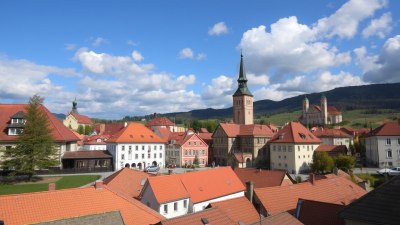Why Maps Lie and How to Survive a ‘10-Minute Walk’ That Takes an Hour
Explore the reasons maps can mislead and how to navigate lengthy walks effectively.

Maps are indispensable tools that help us navigate through the complexities of our physical environments. However, despite their utility, maps can sometimes deceive, leading us to believe that a journey will be much shorter than it realistically is.
The Illusion of Distance
One of the primary reasons why maps can mislead travelers lies in their representation of distances. Many people assume that if a map indicates a distance of '10 minutes' to their destination, it is an accurate reflection of the time required to reach it. However, several factors contribute to discrepancies between mapped distances and actual travel times.
Topography and Terrain
The terrain depicted on maps is often misleading. For instance, areas illustrated as flat may actually include hills, valleys, or rough terrain that slow down walking speeds. A 10-minute walk on a map could take significantly longer if the route involves steep inclines or uneven surfaces. Additionally, urban landscapes may present obstacles, such as construction sites or detours that aren’t clearly marked on maps.
Human Factors
Human factors play a critical role in travel time as well. The average pedestrian's walking speed can vary widely based on numerous conditions, including individual fitness levels, fatigue, weather conditions, and even the weight of a backpack. The suggested time for a short walk may not account for these variables, leading to frustration when reality exceeds expectations.
Obstructions and Detours
What about sudden detours due to obstructions? While a map may chart a direct path, real-world navigation often requires sidestepping obstacles such as road closures or impassable sidewalks. These detours can add significant time to an otherwise straightforward journey.
Estimating Travel Routes
When planning a trip, it's essential to consider all possible variables. Instead of assuming that a '10-minute walk' will be accurate, travelers should conduct thorough research. Many map applications provide estimated travel times, but these estimates are based on optimal conditions. Check multiple sources, including user reviews or forums, for firsthand accounts of the route.
Using Modern Technology
Modern technology provides tools that can assist in navigating inaccuracies in maps. GPS applications like Google Maps account for real-time conditions including traffic or construction delays. The ability to access live data often leads to a more accurate representation of what to expect. However, the reliance on technology comes with its own challenges, as poor signals or battery life can hamper navigation.
Strategies to Cope with Longer Walks
Understanding that your anticipated '10-minute walk' might take longer can lessen disappointment. Here are some strategies to enhance your travel experience and manage longer journeys more effectively:
Preparation Is Key
Before starting your journey, ensure you are adequately prepared. Wear comfortable shoes, dress for the weather, and pack any necessary items like water and snacks. A well-prepared traveler is more resilient in navigating unexpected challenges.
Plan Your Route
Consider special shortcuts or alternative routes that could speed up the journey. Familiarize yourself with nearby landmarks or community hotspots that could offer rest points along the way. While these might not be featured on maps, neighborhood knowledge can save time.
Time Management
Allocate extra time for walking. If you know the trip will take more than the predicted duration, build in buffers. Whether it’s for rest breaks or to explore interesting sights, allowing for extra time eases the stress of the journey.
Mindset Matters
Traveling should evoke positivity. Adjust your mindset to view the journey as an opportunity rather than an inconvenience. Embrace the unexpected moments, whether it’s discovering a particularly charming cafe or encountering a street musician.
Stay Safe
Safety considerations should never be overlooked. Always remain aware of your surroundings, especially if walking after dark or in unfamiliar neighborhoods. Inform someone of your whereabouts, particularly for longer walks.
Physical Conditioning
Take into account your physical fitness. To manage longer walks, develop a gradual routine. Strengthening your endurance prior to tackling longer routes can enhance your overall experience, ensuring you feel energized and capable throughout the journey.
Embrace Unexpected Delays
Delays can often bring surprise joy. Turning what could feel like a frustrating experience into a delightful exploration can make your journey fulfilling. Discovering hidden gems along the way or meeting fellow travelers can provide enriching experiences that outweigh the frustration of time miscalculations.
Evaluate Your Modes of Transportation
In instances where walking is not feasible due to the lengthy travel time, consider alternative modes of transportation. Public transport, bicycles, or rideshare options can often alleviate the stress of extended walking distances and provide immediate access to your destination.
Understanding Maps Better
To further combat the potential pitfalls of misleading maps, let's delve into understanding how maps work. Maps are a representation of reality but do not convey the complete picture. They lack the nuances of real life, such as atmospheric conditions, traffic patterns, and human behaviors that impact movement.
Cultural Factors
One can also take into account cultural differences in mobility. In some cultures, walking is more common while in others, there is a greater reliance on cars or public transport. Understanding these cultural factors can also yield deeper insights into distance perceptions.
Conclusion
In the age of rapid information, it is essential to recognize that distances on maps are estimates subject to a myriad of influences. To navigate through potential disappointments in travel planning, adopt a flexible approach. Prepare adequately, stay informed about real-time conditions, and embrace a positive mindset that turns the journey into an adventure. Maps may lie, but with insightful strategies, your experience can be rewarding, despite the twists and turns along the way.











